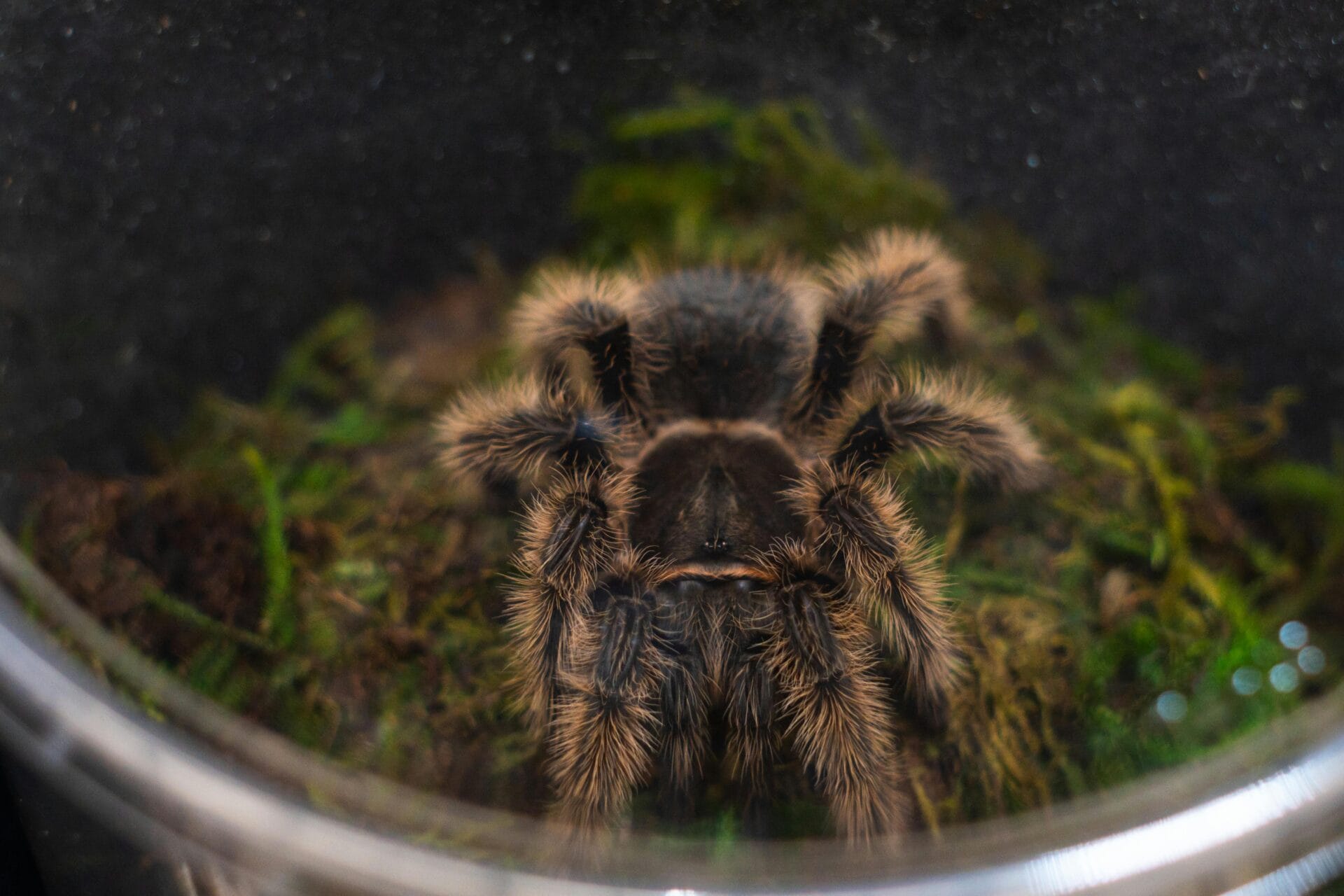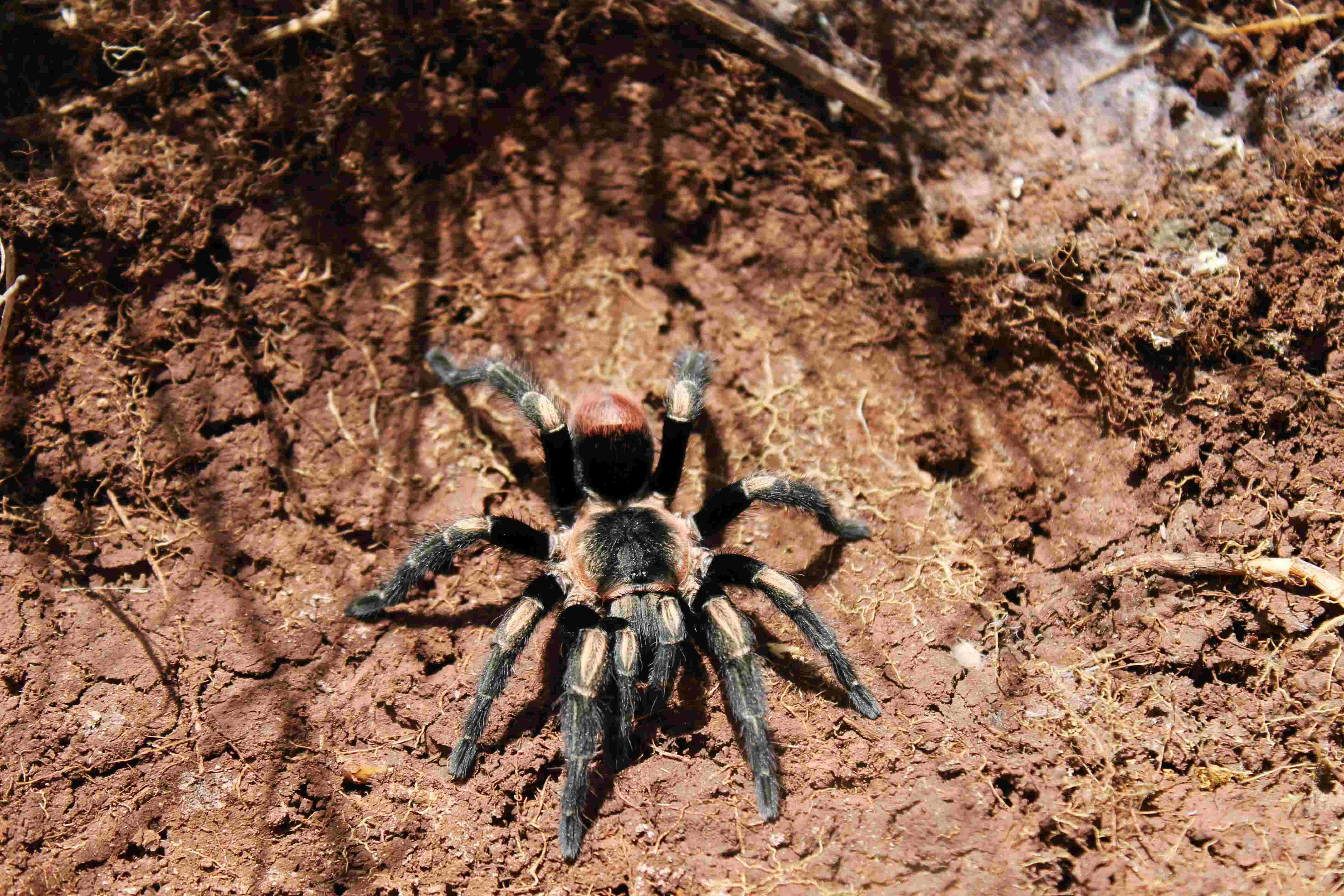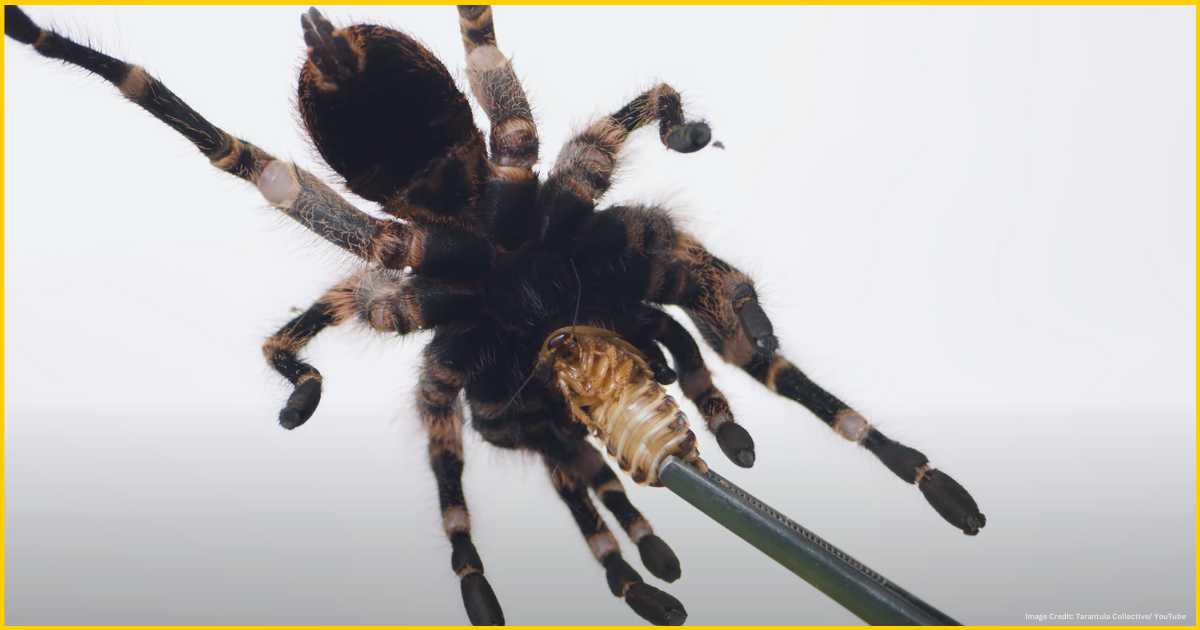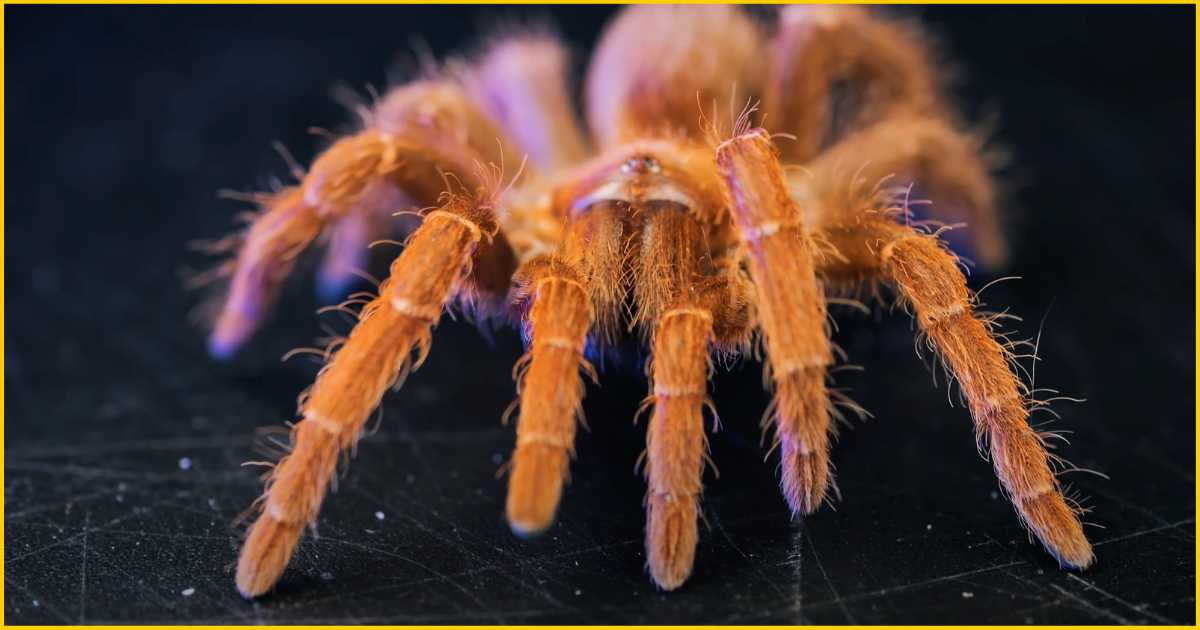If you are searching for the question “how long Tarantulas live without food”, your curiosity ends here. Let’s dive into the world of these interesting groups of large and hairy spiders of the Theraphosidae family. As of December 2023, 1,100 species have been identified, with 166 genera. Most North American tarantula species are brown, and tarantulas are becoming increasingly popular as pets. Some species are readily available in captivity.
If you are one of the new Tarantula owners and planning a vacation or going out of town for some reason and you are worried about your Tarantula feeding and searching for a question “how long Tarantulas live without food”, the answer may greatly surprise you.

How Long Tarantulas Live Without Food?
The average tarantula can survive without food for a month or more during its lifetime. Additionally, they have been known to endure up to 2 years without food. However, they need a good source of water and humidity in their environment for living as Tarantulas can quickly dehydrate within a week and die.
Table of Contents
How long Tarantulas live without food- Let’s Dive Into The Question!
How do they live so long without food?
Tarantulas can live so long without food because of their slow metabolism. Slower metabolism means they don’t burn energy at the same speed as other animals. So, tarantulas and other spiders can conserve energy for a longer period of time but they need a sufficient amount of water and humidity around them. While molting their exoskeleton, Tarantulas may go through their fasting period and will not eat for weeks or even months before and during the molting process.
Tips for the Tarantula owner
If you are a Tarantula owner and leaving for vacation or any work, the main problem is not food as Tarantulas can live without food for a month or more. Your problem will be water as Tarantulas need fresh water and humidity around them to survive and fight with dehydration. Dehydration is a more deadly threat than food for Tarantulas.
Tarantulas require appropriate humidity levels based on their species. You can maintain the humidity for your tarantula by placing a water bowl in the glasshouse or terrarium with a rock inside to prevent crickets from drowning and contaminating the water. Additionally, spraying the enclosure walls with a mister can help increase humidity. It’s important to monitor humidity levels using a hygrometer. Too little humidity can cause dehydration in tarantulas, while excessive humidity may lead to fungal infections.

How do Tarantulas eat and drink?
If you are curious to know “how do Tarantulas eat and drink”, you should understand the digestive system of Tarantulas.
The tarantula’s mouth is situated beneath its chelicerae on the lower front part of its prosoma. It’s a short, straw-shaped opening that can only suck, meaning it can only ingest liquids. Prey with substantial solid parts, like mice, need to be crushed or predigested. This is achieved by coating the prey with digestive juices secreted from openings in the chelicerae.
The tarantula’s digestive organ, or stomach, is a tube running the length of its body. In the prosoma, this tube widens to form the sucking stomach. When the powerful muscles of the sucking stomach contract, it expands in cross-section, creating a strong sucking action. This allows the tarantula to draw its liquefied prey through the mouth and into the intestines. Once in the intestines, the liquefied food is broken down into small particles that can pass through the intestine walls into the hemolymph (bloodstream). From there, it is distributed throughout the body. After feeding, any remaining leftovers are formed into a small ball by the tarantula and discarded. In a terrarium, they often deposit these leftovers in the same corner.
Tarantulas drink water through their mouth, the same way as they eat. The Tarantulas go to the water source and submerge them into the water and dip their mouth (Chelicera) into the water and suck the water up. Tarantulas breathe through openings along their bodies and legs, allowing them to avoid drowning when submerged. They also absorb water from their environment and from their liquefied prey.
How often do you need to feed Tarantulas?

Feeding Tarantulas depends on the size of the spider. It’s better to feed your slings twice a week. One cricket of small or medium size, not bigger than their body is enough.
For the subadult, feed them once a week. If the abdomen looks too big or your tarantula refuses to eat, it’s better to slow down or wait 1-2 weeks and try to feed them again. If your tarantula still doesn’t eat that means he/she is preparing for molt and this time, it’s better to stop and wait for 2 months. Here, the key is to observe the behavior of your Tarantula and act accordingly.
And for the adult and big ones, it’s better to feed them with one or two grasshoppers a week. As said earlier, try to observe the behavior of your Tarantula and feed them accordingly. For some Tarantulas, it’s easy to find when they are hungry. Especially the burrowing ones, they stand at the entrance of their burrow, ready to hunt and it’s a good sign that your Tarantula is hungry.
Can Tarantulas eat mealworms and cockroaches?
Tarantulas are carnivorous which means they need to eat meat in order to survive and in captivity, Tarantulas are commonly fed with crickets, mealworm and cockroaches. These are great options for Tarantulas as they are easily found and a good source of proteins. However, it’s important to know for you that they are not picky eaters and they will eat anything which moves.
In the wild, tarantulas consume a range of insects, spiders, and other small arthropods. They are opportunistic hunters, feeding on whatever they can capture. This may include crickets, beetles, grasshoppers, and even small lizards, frogs, and mice.
Conclusion
Tarantulas can survive for extended periods without food due to their slow metabolism. They can go without food for a month or two, and in some cases, even years have been documented. However, they require water to survive and can dehydrate quickly, leading to death within a week or two without it. During molting, tarantulas may fast for weeks or months. Providing a diet rich in insects like crickets, mealworms, and cockroaches, along with access to ample water, is crucial for keeping them happy and healthy.
